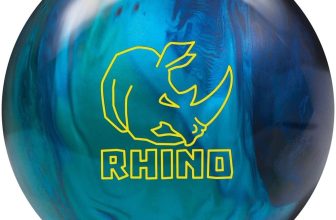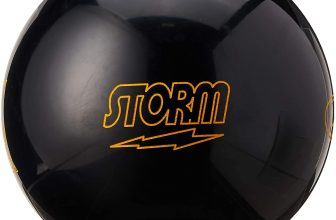Are you tired of reactive resin bowling balls and need a chunk that hearkens back to the glory days when urethane cover shares mastered the lanes? Storm’s latest urethane offering, the Storm Pitch Black, could be only for you. Our Storm Pitch Black summary will strike this urethane bowling ball monster from many angles, providing you the 411 you want for a possible purchase choice.
- Storm has created the Pitch Black, a solid urethane ball, for their Thunder Line
- This ball is intended to provide control on lighter and shorter oil conditions
- The Capacitor core gives this ball a straighter but strong delivery
- Weight Block: Capacitor Core
Last update on 2025-01-16 / Affiliate links / Images from Amazon Product Advertising API
Is your Storm Pitch Black the Ideal ball for you? Which kind of lanes can it be most effective on? Read farther into our comprehensive Storm Pitch Black review to discover!
Want to skip ahead to a particular section?
Full Storm pitch black bowling ball review
The most recent bowling ball introduced in Storm’s Thunder series, the Storm Pitch Black includes a brand-new good urethane cover inventory that responds and rolls exactly like you would expect a urethane bowling ball to respond. Instead of being constructed to mimic reactive resin bowling balls’ overall moves, the Storm Pitch Black goes old school.
That means that the ball strikes its hook and total movement very early at the routine with the incontrovertible charm of classic urethane. Together with this 1000 grit end, the Storm Pitch Black’s cover inventory hits the commencement of its hook nearly instantly. That is vital to get a true urethane bowling ball such as the Storm Pitch Black. Otherwise, it will not hook with any kind of efficacy.
The issues we ran into using the Storm Pitch are far less indicative of some quality problems with the ball and also, therefore, are more regarding the constraints of authentic urethane cover stocks. The Storm Pitch Black has submerged in extended or high-volume oil layouts. It requires friction and lots of it to actually get started, so hefty oil only leaves it ineffective.
The Storm Pitch Black is a wonderful controller bowling ball that also does wonders directly up the dry section of the lane. It retains the pocket easily and portends strong snare carry in doing this. In other words, that is a fantastic chunk once the conditions are correct. It is not the perfect ball for every single lane, but it certainly does the trick to dry lanes, worn out, and shorter oil patterns.
Characteristics, Specs & Materials
Storm Pitch Black Bowling Ball
Control Solid Urethane Cover inventory
Capacitor Core
1000-Grit Pad Factory End
FEATURES:
The Storm Pitch sports a totally new urethane cover inventory formula. Its Control Solid Urethane cover inventory is constructed to respond like a timeless urethane cover inventory with the nuanced reactivity of newer urethane bowling ball versions.
The ball symmetrical Capacitor heart conveys a higher RG and lower total horsepower compared to the previous Turbine capacitor core employed in Storm’s Organic string. Bowlers with greater rev rates will find a far better overall response and will face up to the pocket considerably easier when petroleum patterns get somewhat heavier.
At length, the Storm Pitch Black’s finish 1000 grit pad is just tough enough to portend somewhat more overall movement on milder petroleum patterns. It is a fantastic end for your ball’s in general friction coefficient and gives it a distinctive early movement on tender and medium-dry lanes.
SPECS:
| Shade | Pitch Black |
|---|---|
| Center | Capacitor (Symmetrical) |
| Coverstock | Controll Solid Urethane |
| End | 1000 Grit Sanded |
| RG | 2.57 |
| Differential | 0.022 |
| Flare possible | Minimal |
| Recommended Lane Condition | Dry |
MATERIALS
The Storm Pitch Black is a genuine throwback. Its Control Solid Urethane cover inventory reacts extremely early and strikes with violent urgency just like you would expect from the greatest classic urethane bowling balls. Its ceramic Capacitor symmetrical capacitor core shops energy efficiently for a strong pin effect once the ball slots towards the pocket.
Everything Storm did in producing the Storm Pitch Black was with the expressed goal of bringing the very best of urethane balls in yesteryear and upgrading it for efficiency and efficacy in the current. For the most part, they did just that.
Advantages & Disadvantages
Pros:
Should you require a ball that provides pinpoint control and heavy hitter potential on brief and depleted oil routines, this ball is the best ball for you. Instead of needing to correct a chunk’s reactivity, the Storm Pitch Black functions as a pure extension of your general shot and movement on drier lanes.
In other words, the Storm Pitch Black supplies the truest urethane encounter of almost any bowling ball we have tested over the last few decades. It breaks ancient and ends up its hook until it reaches the rear of the lane — like the urethane bowling balls that dominated the market in the eighties.
If you truly need that the urethane experience of summit controller and smooth geometrically sound hooks, then you can not do any better than the Pitch. Higher rev bowlers may find a little excess oomph from this chunk on moderate acrylic patterns also, employing the more demanding 1000 grit end for their benefit for greatest friction.
Everything concerning the Storm Pitch Black bowling ball yells is classic. If you are not getting everything you need from the most recent crop of reactive resin bowling balls, then blasting back to yesteryear might be the ideal alternative for you. The ball is a change of speed ball which could really do harm on tender and medium-dry lanes. It is well worth the look if you would like something different.
Cons:
Don’t bring this chunk to thicker oiled lanes or pops with intricate, long oil patterns. The Storm Black is just not devised to perform any actual damage in these types of ailments. It loses all its duration and becomes a comprehensive paperweight.
Additionally, going back in time into some timeless urethane reaction brings together a number of the important disadvantages of employing a pure urethane bowling ball. There is not a lot of entire hooks to be had and anything hook there needs to be launched early. Friction is this ball friend. Its deficiency of petroleum absorption causes it really is determined by the friction of dryer lanes.
Lower rev bowlers may have some conflicts with the Pitch Black on medium-oiled lanes. In reality, it may reduce the ball’s efficiency down considerably for bowlers with no excess oomph behind their own shot.
In summation, oil is an actual enemy of the Pitch Black. Too much of it’s going to leave this ball and not be able to make the most of its own value.
Our Ideas
The Storm Pitch Black is a tricky ball to speed. It’s obvious deficiencies on thicker and more oil patterns. It does not have nearly the general hook possible of the very best reactive resin bowling balls on the market.
However, the genuine advantage of this Pitch Black is it revels in its own limitations. It understands what it’s best and it understands what it provides. It is merely a timeless urethane bowling ball that puts control over angular turns and spins, pin carry, and hit power over reactivity.
If you are aware of how to emphasize a true urethane bowling ball advantage and also keep it away from oil layouts that will deaden its potential, you can not do much better than the Pitch Black.
“Remember that coverstock accounts for 70 percent of ball response, but the center generates the dynamic form of the response. Your driller will change the shape to fit your match.”
Pattern
THS: 40 feet Med THS
Specs
- The Storm Quick Pitch Bowling Ball utilizes the Tour Block Core (symmetrical) within the Command XL Urethane coverstock.
- 15 pound = RG of 2.61, diff of .030
- Coverstock end: 1000 grit abralon
Category
I’d consider this chunk in the specialty class.
In General
First shots I am presuming urethane, go right. Ring 7. Push the breakpoint in, puke. I am not feeling great. I then thought, okay push the urethane ball to the ancient external friction and holy moly did the Quick Pitch come to existence. After I did this I did not stop striking. It’s obviously urethane but does not feel like it snacks super tough in the front portion of the lane such as the Hot Mobile or a new Pitch Black. Nonetheless, it’s still got a fairly early roll along with the long walk into the pocket. And while sometimes you get that diverting hit throughout the hooks, this one actually kept driving.
I certainly would not call this type of reactive response but it actually walks in and pushes nicely. I felt pumped up and may hit. I had been thinking to myself I could not recall the last time that the chunk made the home shot feel this simple for me. I was thinking for a while, I would like a ball that has an old school response for if circumstances just find it dumb and you may visualize a ball which you are able to play at the friction but may nevertheless possess a smooth roster to the pocket. I was imagining a circa 2000 age-old responsive ball although the speedy Pitch looks like it matches that place. Do remind of the old school blue Hammer and I imagine this is not a coincidence.
I saw back the Pitch Purple inspection and that I was a little trapped. It was too powerful to play at the friction such as the quick Pitch but it was somewhat too soft out of it. I could get to the pocket without any problem. Just did not get the constant drive. This had been the one I believed could prove to play such as the 2000s reactive I said but it actually did not. And while I’d say neither will the quick pitch, that response only would be something I’d really like to park for days. On the other hand, the line will not hold up indefinitely and that is always my difficulty with urethane.
For Sean, the response looked just as magnificent. There is not a lot to add I did not say. He moves the next arrow into the friction and the ball only trucks. What is interesting is that he analyzed the ball appeared so great for him. When I first began, I said how I had been really amazed by softer responses until I figured out how to perform with a urethane ball. Usually, higher rev men look very good with urethane since they can whack onto it and have commanded backends.
Low rev bowlers can occasionally use urethane from the friction and find the ball. Recent urethanes or urethane-like chunks may be too powerful from the friction rather than powerful enough once you find oil throughout the fronts. But frankly, my ball response and struck looked easily as great as Sean’s. He did a place check to demonstrate it is urethane and…it’s.
Bryan was following. He found that the quick Pitch was somewhat sooner reacting than I viewed. We analyzed in precisely the exact same session as the Desert Tank which appeared to push a little more. He tried different things and depended on status 18 pushing the ball. This gave him the very best look. It actually felt like a conventional urethane look for him.
If he missed the ball out did overreact instead of just sitting. Misses are a little lazy. As he moved, the ball struck softer. He discovered the ball type of telegraphed his discharge as it doesn’t contain anything. So marginal shots will provide marginal strikes and very good shots struck nicely. Finally, I would not find this chunk as a routine in Bryan’s arsenal. We will do a different comparison to the Desert Tank.
Final Thoughts
I am not typically jumping from my sneakers to check a urethane ball but’ve felt as though there’s the occasional demand for this. Then came across the Storm Quick Pitch and I’m thinking this may be rather helpful. My 6th ball in the bag is generally either a dedicated spare ball or a specialization urethane/spare combo. The quick Pitch is the precise kind of ball to match in that slot.
Non-resin urethane balls must be in every serious bowler’s arsenal to be used on extremely brief and/or very low volume patterns.
I began bowling at a top level beginning in the late 1970s, years prior to the initial urethanes surfaced, therefore that I had years of experience with rubber (LT-48), polyester and urethane.
Even after resin surfaced over two years ago, I still employed urethanes such as the Ebonite NITRO, Columbia WINE U-DOT, and Faball BLUE HAMMER on a normal basis.
It was only when I turned into a Storm staffer and began throwing Storm balls only I chased my urethanes once and for all.
There were times during the next ten years or so I actually wished I could pull my BLUE HAMMER from the cellar, like when bowling about the PBA Cheetah routine, as Storm did not have a urethane such as this.
Subsequently, Storm came out using all the NATURAL urethane chunk, which I used nearly exclusively in creating it into the semifinals of a PBA Regional on Cheetah long after it came out.
The NATURAL’s sole issue is that it was not quite powerful enough to deal with any substantial quantity of petroleum (for me ) on a brief pattern. (The PBA Regional at which I left it into the semis featured a Cheetah which has been hooking quite a little.)
Additionally, I obtained a SUPER NATURAL as it came out, but urethane with a little resin too skidded too far in any substantial quantity of oil for me personally.
The storm has solved this problem using all the PITCH BLACK, which offers the very best urethane response I have seen since the glory days of my favored urethanes two years and years past.
I make that decision after using it on new Cheetah-type brief patterns, wet/dry home shots and well-intentioned PBA patterns.
The Controll strong urethane coverstock handles the oils up to quite a considerable volume IF there’s a dry location.
It really gave me a much better response on the more wet/dry home pattern and well-intentioned PBA routine than to the shorter blueprint — playing with the grip came easier for me than enjoying with the hook.
The PITCH BLACK rolls are powerful and will dig out 10s and blow 5s if it is pitched great. It’ll hook off the dry and prevent as it gets into the petroleum onto a more routine — that is what was missing for me to the brief pattern. By hook, belief slow movement — there’s not any snap into the PITCH BLACK!
I used it in my final two games of this PBA50 Tour Fort Wayne Classic about the PBA50 Chameleon pattern which was broken into a pretty wet/dry state that was supplying me plenty of 9-counts with about what I attempted from an interior angle.
Together with the PITCH BLACK, I could hit on the pocket practically every shot going back to playing up around 10-board and ended with a set of matches at the 230s, which was as large as I obtained that championship.
Together with the fundamental Capacitor heart from the PITCH BLACK, I do not believe exotic drilling will issue much. I have mine using the pin across the ring finger and the CG kicked a bit more appropriately, and that I get only an inch or 2 of flare.
(I’m not supplying numbers in my drillings since I simply don’t understand exactly what to use for my own PAP numbers. For many years I used old amounts that I know were not true and my re-measured amounts came on a few of my experimental grips I gave up on as I returned to my long time grip. I intend to acquire re-measured once I get an opportunity.)
The PITCH BLACK works really well in its own box end I don’t have any desire to change the 1,000 grit box complete coverstock. In addition, I think shined it up would come to be overly touchy in petroleum for me. I’ve seen no signs of lane glow so much — and now I have been using my PITCH BLACK for spares because I received it.
Aside from those favorite urethanes of years past, I do not know exactly what to compare the PITCH BLACK to. It is definitely much more powerful than the SUPER NATURAL or NATURAL.
I would recommend it for everyone who fights with wet/dry requirements and is on the lookout for some controller and for people who compete on short patterns. I am convinced it also would be great playing”shield” on a really barbarous routine in which keeping the ball in play and preventing designer breaks is vital.
The only caveat I would provide is that for me personally, I had dry boards to supply a fantastic response – the few occasions I tried it on a new non-house shot without a defined dry place I had difficulty locating a persistent response.
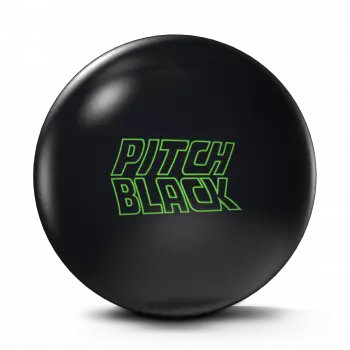

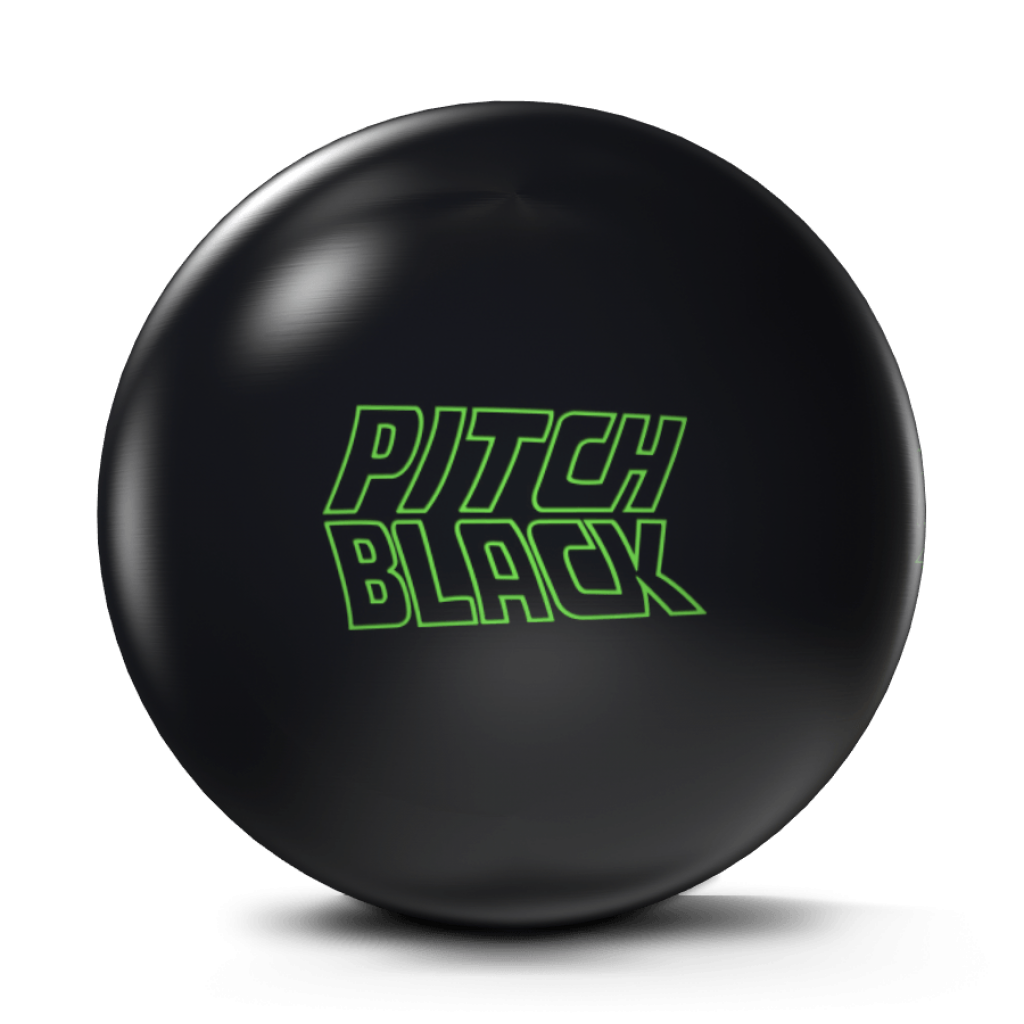
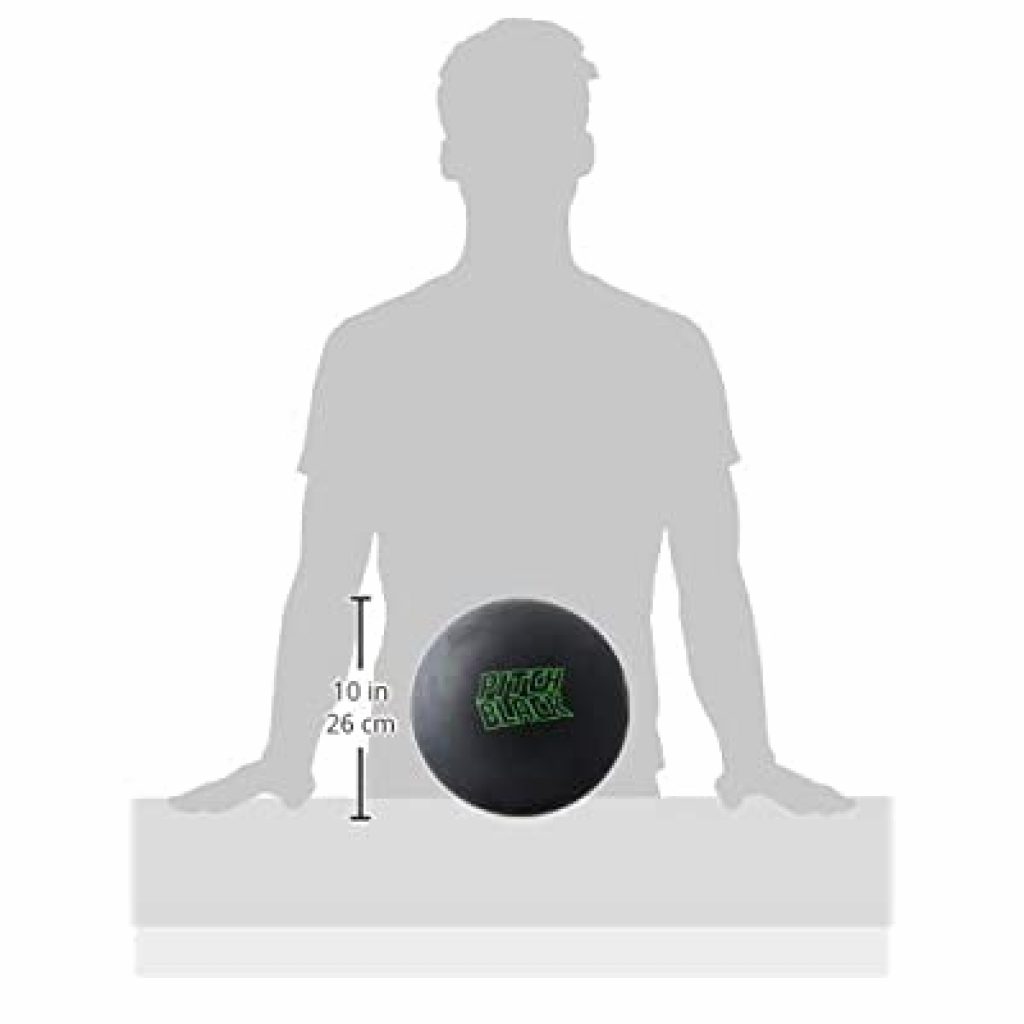
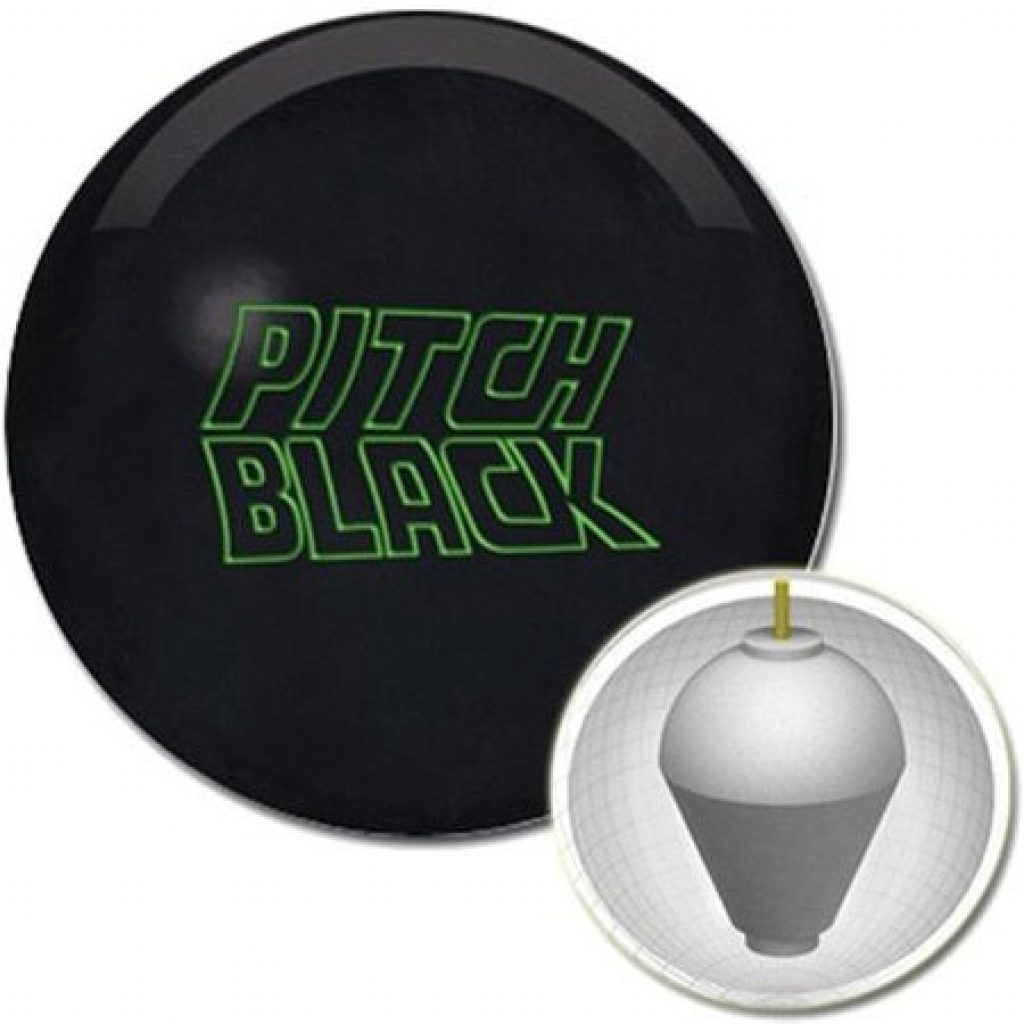
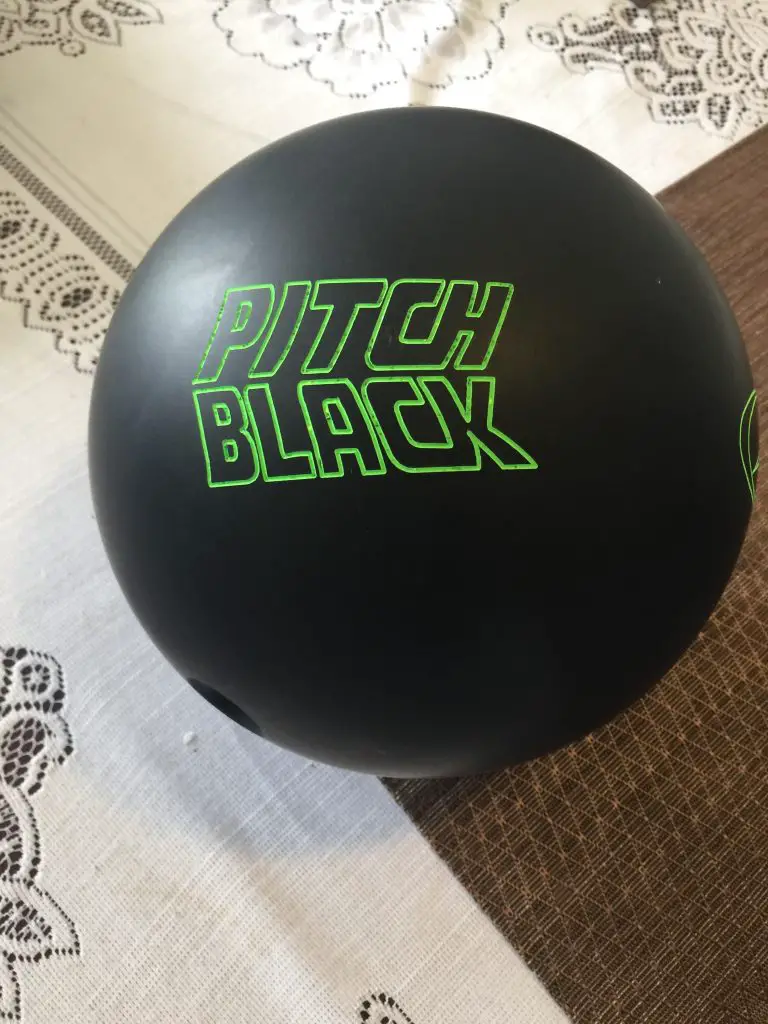
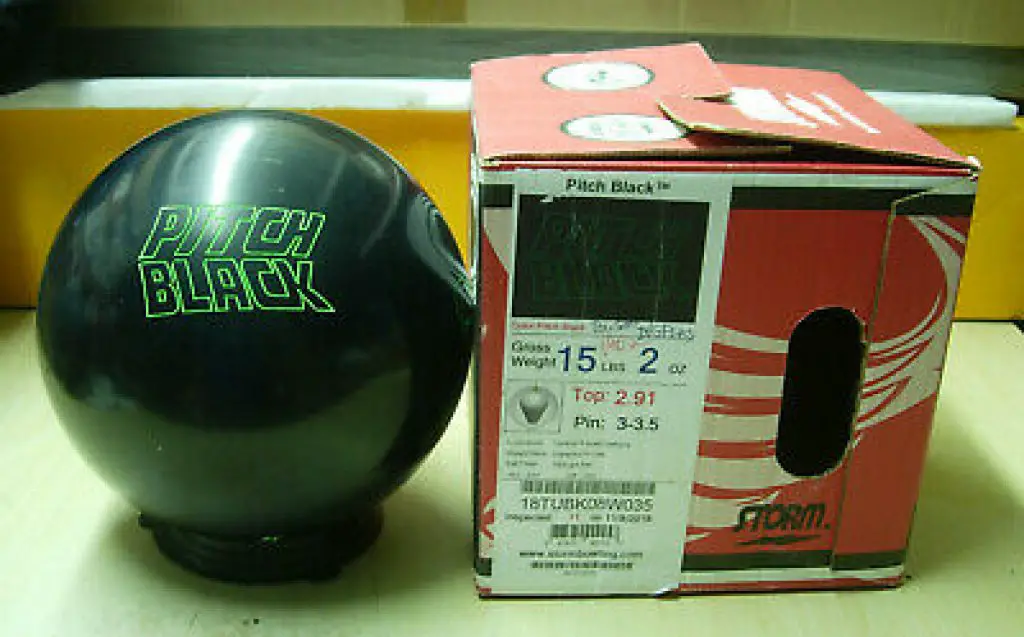
![The Full Storm Pitch Black Bowling Ball Review [Updated 2023]](https://bowlingballsguide.com/wp-content/uploads/thumbs_dir/Brunswick_Strike_King_Red_Pearl-pb07kbh58rzjiizdnvrd2zrz3ralc8yjez6y0afqyk.jpg)
![The Full Storm Pitch Black Bowling Ball Review [Updated 2023]](https://bowlingballsguide.com/wp-content/uploads/thumbs_dir/Finding-the-Best-Deals-on-Kids-Bowling-Shoes-qaiv2ijwjlrw0x3qur7byg941lrm7runvq3ocz1ni4.png)
